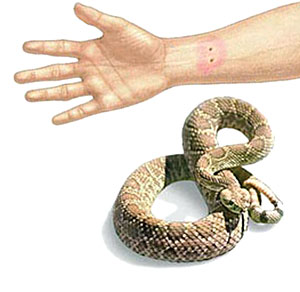 |
In the corners of the Kathmandu Valley we worry about leech bites in the summer, but imagine how much more frightening and deadly a snakebite is?
Many of us appreciate the fact that venomous snakebites are an occupational hazard for farmers in the Tarai, especially in the summer. South and Southeast Asia have been identified as having the highest number of snakebites per year. Conservative estimates suggest that there are 20,000 cases in Nepal a year, almost all in the Tarai, that cause
1,000 fatalities.
Unfortunately, because snakebites happen most often in impoverished rural settings, prevention and medical management have been neglected. Furthermore, there is a dearth of information. Many Nepali doctors will consult western textbooks to treat snakebites. But the treatment of bites from Nepali snakes is significantly different from that which is recommended for pit viper snake bites from the Sonoran desert in Arizona.
Russell's vipers, kraits and cobras are the three well-recognised types of venomous snakes in Nepal. While kraits and cobras cause neurological and breathing problems, viper bites cause acute kidney or blood problems.
Dr Sanjib Sharma of the BP Koirala Institute in Dharan, who has published extensively on snakebites in Nepal, has shown that prompt motorcycle transport to a proper health facility by community volunteers can save lives in a Tarai village setting. At various institutes, Sharma has trained personnel ready to administer anti-snake venom and provide artificial ventilation if needed.
Rewards for killing venomous snakes have been used to minimise bites, but the ecological impact may be detrimental as snakes keep the rodent population in check, thus helping farmers.
An awareness of the behaviour pattern of snakes is more useful.
Kraits in the Tarai seem to mostly bite at night when people are sleeping on the floor. Using a mosquito net will help deter snakes. Snakebites, furthermore, are usually on the feet and legs, so villagers would do well to consistently wear proper foot gear in paddy fields. Simple measures like these will make a huge difference. A pound of prevention is better than an ounce of venom.
READ ALSO:
The lake that was once Kathmandu
Take me to the river
Stuff Nepali People Like - I


